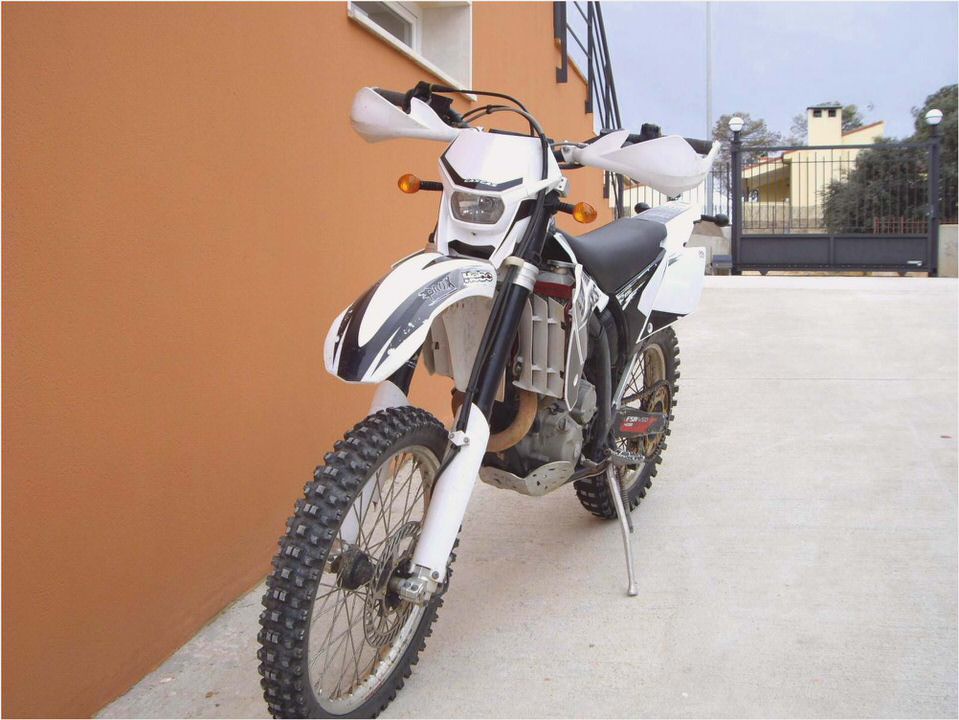
Angry little bull
Test by Ray Macarthur. Pics by Nigel Paterson
IF YOU think the EC 250 FSR is just a smaller version of the mighty 450, reading this you might raise an eyebrow or two.
For a start this carburettor fed engine was sourced from Yamaha until Gas Gas develops its own quarter litre four stroke, the forks are Marzocchi instead of the Sachs found on its siblings and the seat height is just as tall as its big brothers.
As the first 250 four-stroke enduro machine for Gas Gas it’s not small but it is nimble.
The engine is Yamaha’s five-valve donk that has been around in one form or another for years now. It breathes through a flat slide Keihin FCR-MX37 carburettor and puts the power to the ground through a five-speed gearbox (unlike the fuel injected six-speed 450).
It has electric start and Gas Gas has fitted its own alloy kick starter and clutch case cover to give the engine their signature.
The header pipe is fitted with a nice little guard to reduce the risk of burns and keeping the barking at bay is a “Reverse Exhaust Systems” lightweight alloy muffler that sounds great, works well and negates any need for an aftermarket unit.
In what appears to have been a last minute graft, the wet plate clutch is operated through a strange mix of hydraulic and wire cable.
The operation feels good though, with a braided hydraulic line that runs from the handlebar lever to a slave cylinder, which then activates and pulls a stubby wire cable which in turn operates the clutch actuating arm on the top of the gear case. Difficult to explain and understand why.
Of course on the WR, Yamaha use a wire cable all the way so this is just an adaptation to make it hydraulic. It appears to be an odd fit for Gas Gas who generally use the latest and lightest of everything but have had to come up with this compromise to make it work.
It seems to work pretty well and was nice and light but the clutch did have a small tendency to drag a little on some occasions.
The starter motor looks a little exposed sitting at the front of the motor, and with no bash plate at all I was a little worried about putting a hole in the crankcase as I was picking my way through a washed out outcrop of rocks.
If you are thinking of doing any real fair dinkum trail work I would seriously think about fitting one.
Up front on steering duty are 45mm USD Marzocchis with a linkage actuated Sachs on the rear. As you would expect all have adjustable compression and rebound.
Brake calipers are all hydraulic Nissin floating units sporting a twin pot front and single pot rear on vented discs that perform with plenty of stopping power.
The test bike came with Metzelers fitted but the bike comes standard with Michelins.
Black Saxess rims are highlighted by their bright red wheel hubs which continue the black, red and white colour scheme on the hot looking sticker kit.
The 450 we tested previously had done a few hundred more Km’s and the stickers were starting to come loose. These ones were fine but it is something to keep an eye on.
The ride
The first thing you notice is how tall this bike is for a 250. At 940mm tall the seat is the same leg swing as the 450 which can be a real effort for anyone under 180cm tall.
It also uses the same 7.5 litre fuel tank that disappears into the centre of the frame behind the radiator guards. This gives a great slim feel that combined with the stiff black grippy top seat makes it easy to move around on.
There is good frame to ground clearance with footpegs mounted fairly high. They keep your feet out of the way of obstacles but did not make the riding position feel too cramped.
There are two positions available to mount the handlebars so you can get them well forward. A nice neat rubber pad slips over the top of the handlebar clamps to soften the blow if things go wrong.
All the controls feel comfortable and easy to use, and there’s a decent quartz halogen headlight up front and a very tidy tail light and number plate mount at the rear
The silver multipurpose readout in the centre of the cockpit is easy to read and lights up well for night riding. Although there isn’t an ignition lock there is a steering lock to slow any thieves that may be trying to knock off your bike if you ride it down to the shops.
There is an alloy side stand that is lightweight and sits well out of the way but has a very small foot that will sink into anything a little soft allowing the bike to fall, so just beware.
None of the Gas Gas’ we tested this year came with blinkers fitted on them so I didn’t get to see how durable they are. Apparently they didn’t trust us not to break them.
There is a single screw at the back which releases the seat to expose the foam air filter and the battery. A spring loaded pogo stick releases the filter for easy servicing and the battery is mounted just behind the filter.
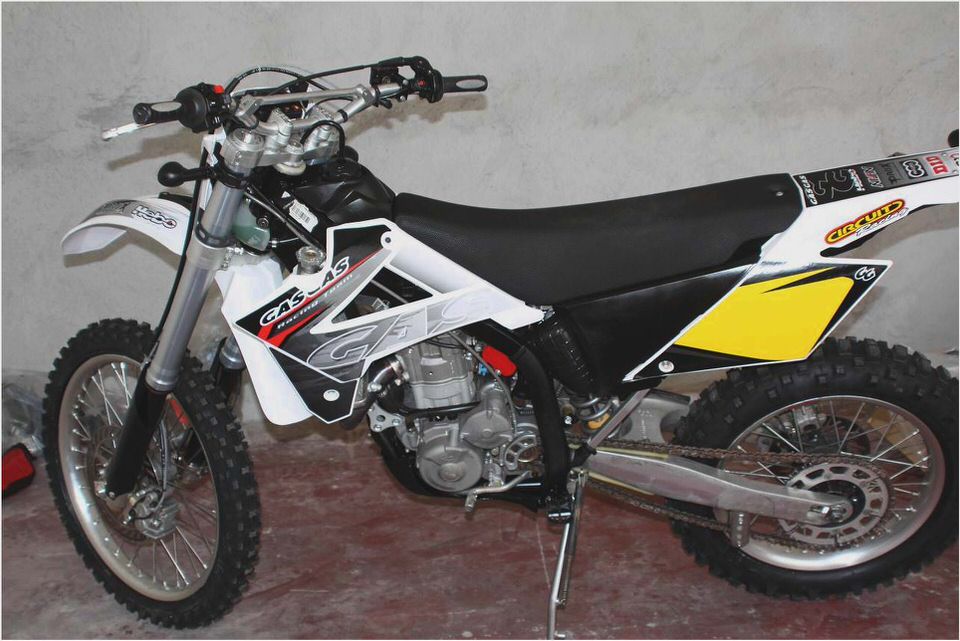
A cam lock instead of a screw to release the seat would have been a nice touch to make it a tool free operation.
During the test I had a screw on one of the battery terminals come loose just as I stalled the bike in a big deep muddy waterhole.
Man didn’t I do some cursing trying to get it started before eventually dragging it out, tightening the terminal and firing it back into life. I think this electric start stuff is making me soft!
The steering felt very light and the bike felt nimble and easy to flick around as a 250 does.
All the suspension settings started in the centre positions but I found the front suspension a little unstable on anything that gave it a good bump.
When I backed the compression damping right off it felt much better but it felt like it needed to be backed off a little more to stop anything kicking offline so I think a bit more tuning to suit the rider will just get that extra bit more out of it.
The steering on the EC 250 FSR always felt light and precise where the 450 uses a different steering head angle and was hard work until I got the front suspension settings right.
So long as you worked the clutch the 250 was surprisingly easy to weave up through steep rocky outcrops and tight single trails.
The gearing is well suited to weaving your way up a rutted or rocky hill without being too slow, but you can feel the tall seat height when things go bad.
The Gas Gas is easy to loft the front end over all sorts of obstacles and it just seems to go where you want it to go.
The engine revs well and it will run along at 80 or 90 kmh happily and faster if you push it a bit.
At 110kg the claimed weight is 7kg lighter than the EC 450 FSR but I was surprised to find it has a very similar fuel range considering it uses the same 7.5 litre tank.
I travelled 70km of fire trails and tight single line tracks before going onto reserve. 5.8 litres of fuel topped it back up giving the bike about a 90km range depending on the terrain.
For those that want a better range I believe there is a tank available from Safari Tanks in Victoria that offers almost double the capacity.
The recommended retail on one of these will set you back $11,799 + on road costs and it now comes with a 12 month warranty.
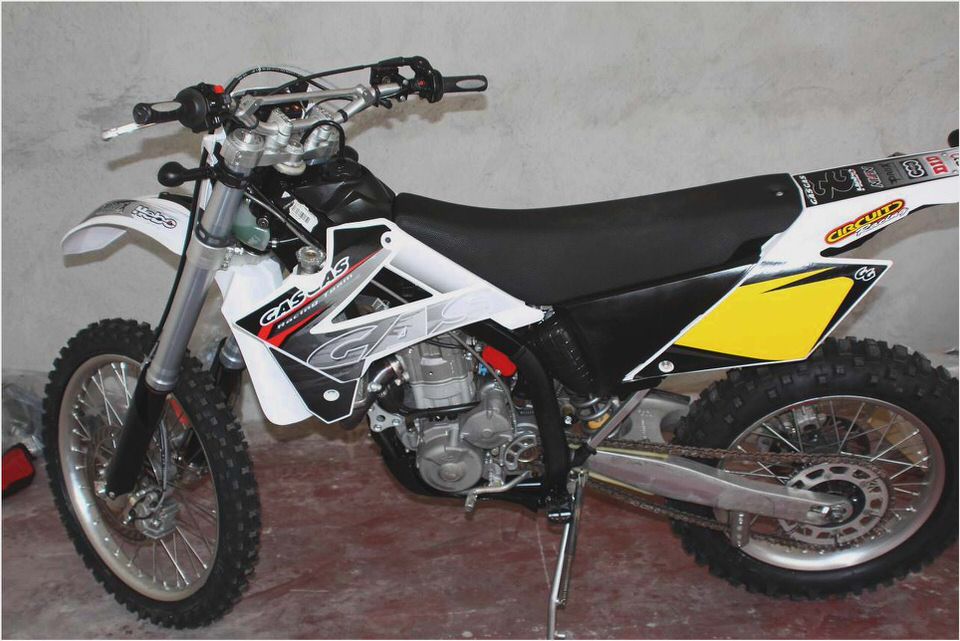
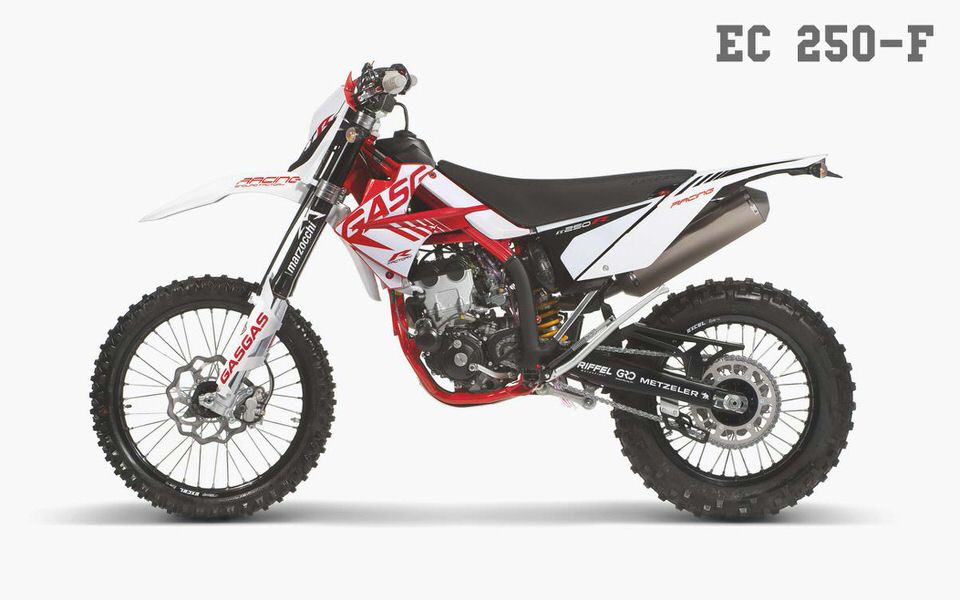
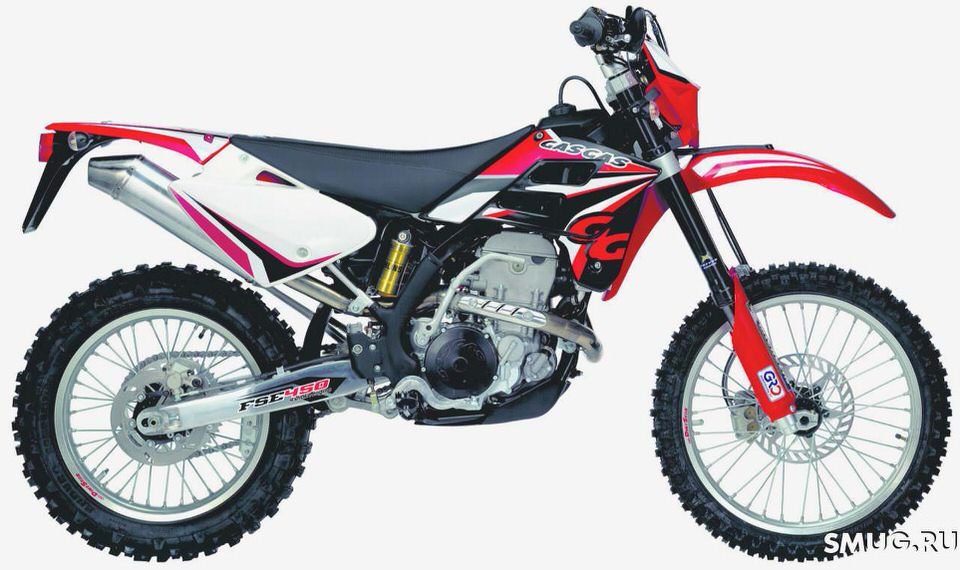
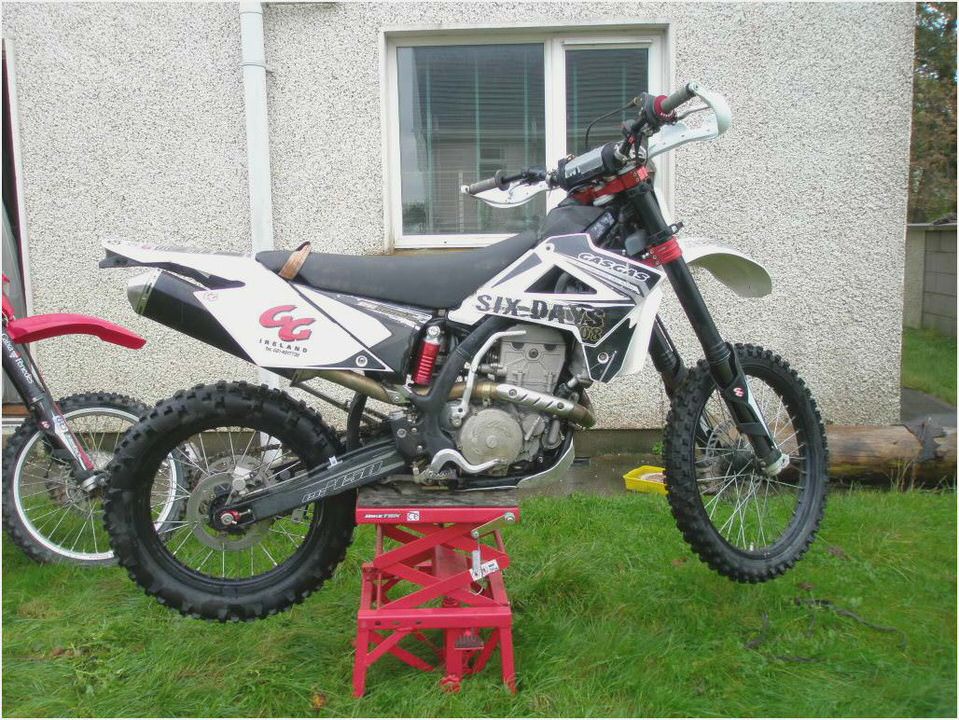
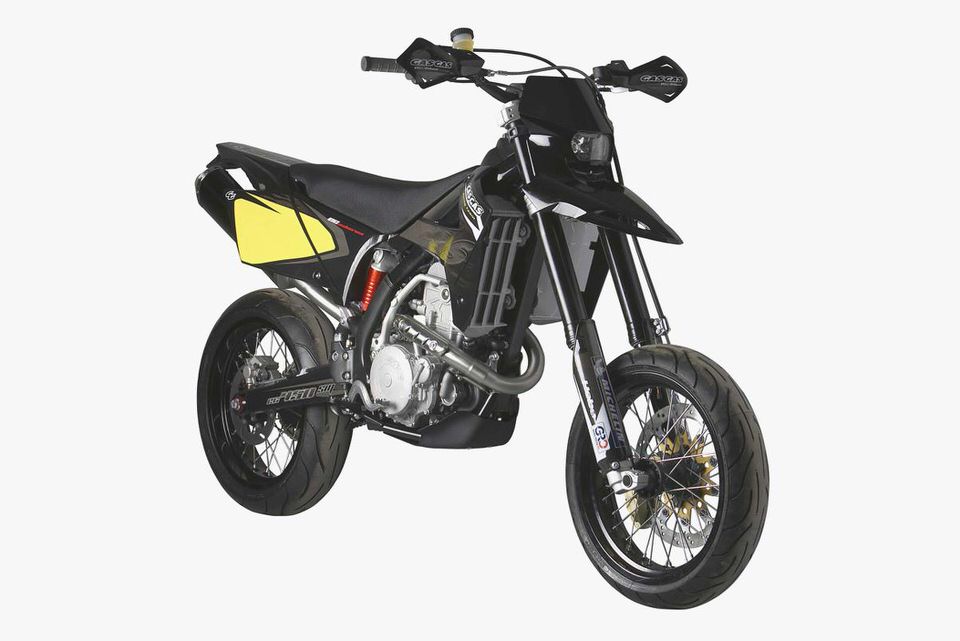
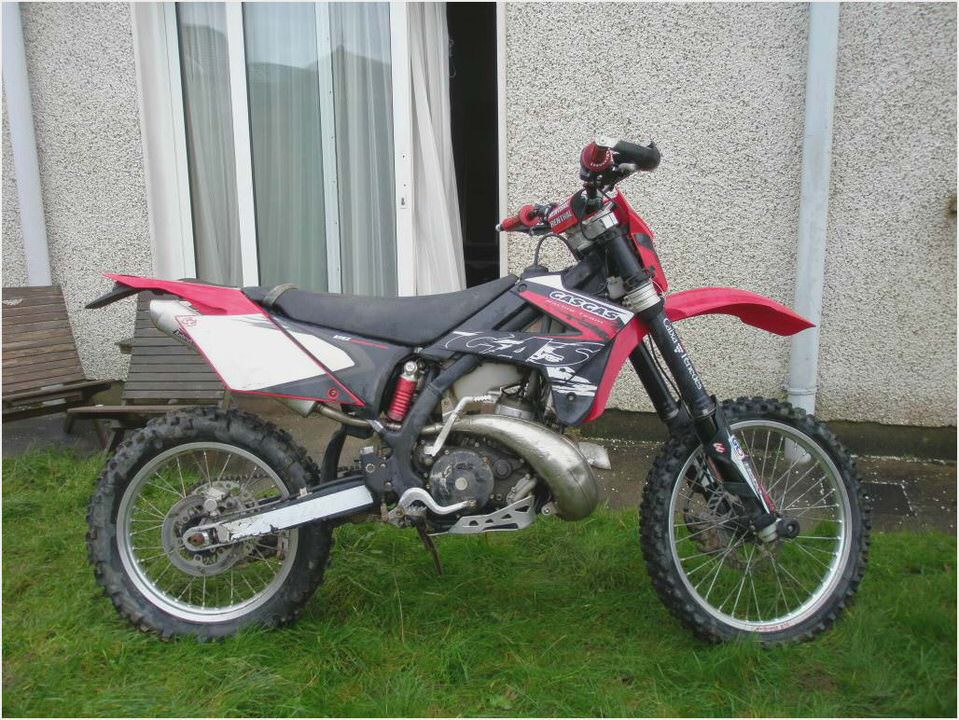
- H&H Action From Reno, And A Look At The 2014 Gas Gas Enduro Models, World…
- 2006 Gas Gas EC 250 – Dirt Rider Magazine
- Gas Gas, Laia Sanz and Marc Guasch, facing the Dakar challenge sixdays.nl
- Gas Gas 250EC – Motorcycle news, reviews & riding tips – bikesales.com.au
- Gas Gas EC 515 FSR – Motorbikes Reviews, News & Advice – bikepoint.com.au

